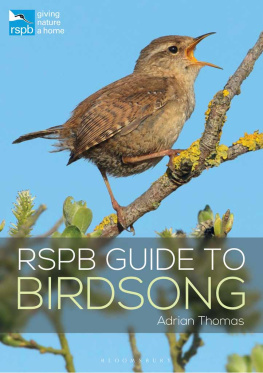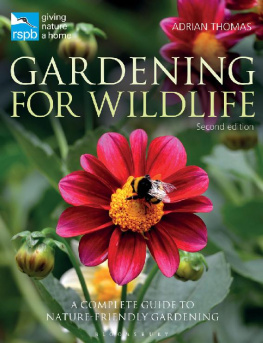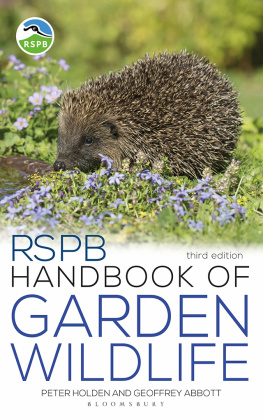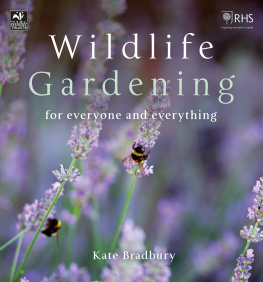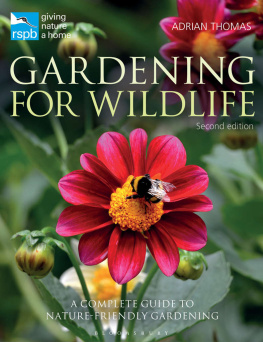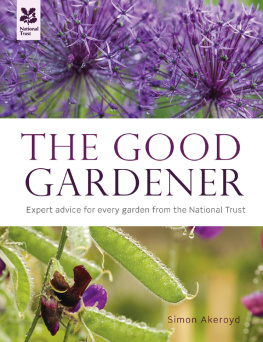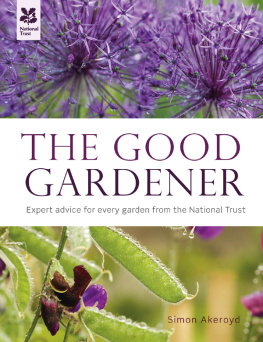
Bloomsbury Natural History
An imprint of Bloomsbury Publishing Plc
| 50 Bedford Square | 1385 Broadway |
| London | New York |
| WC1B 3DP | NY 10018 |
| UK | USA |
www.bloomsbury.com
This electronic edition published in 2017 by Bloomsbury Publishing Plc
BLOOMSBURY and the Diana logo are trademarks of Bloomsbury Publishing Plc
New edition first published 2017
Text Adrian Thomas, 2017
Photographs Adrian Thomas, 2015, with the exception of those listed
Adrian Thomas has asserted his right under the Copyright, Designs and Patents Act, 1988, to be identified as Author of this work.
All rights reserved
You may not copy, distribute, transmit, reproduce or otherwise make available this publication (or any part of it) in any form, or by any means (including without limitation electronic, digital, optical, mechanical, photocopying, printing, recording or otherwise), without the prior written permission of the publisher. Any person who does any unauthorised act in relation to this publication may be liable to criminal prosecution and civil claims for damages.
No responsibility for loss caused to any individual or organisation acting on or refraining from action as a result of the material in this publication can be accepted by Bloomsbury or the author.
British Library Cataloguing-in-Publication Data
A catalogue record for this book is available from the British Library.
Library of Congress Cataloguing-in-Publication data has been applied for.
ISBN: 978-1-4729-3857-2 (HB)
ISBN: 978-1-4729-3858-9 (eBook)
ISBN: 978-1-4729-3859-6 (ePDF)
Design by Julie Dando, Fluke Art
For all items sold, Bloomsbury Publishing will donate a minimum of 2% of the publishers receipts from sales of licensed titles to RSPB Sales Ltd, the trading subsidiary of the RSPB. Subsequent sellers of this book are not commercial participators for the purpose of Part II of the Charities Act 1992.
To find out more about our authors and their books please visit www.bloomsbury.com where you will find extracts, author interviews and details of forthcoming events, and to be the first to hear about latest releases and special offers, sign up for our newsletters.
Contents


Foreword

When it comes to gardening for wildlife, its up to you: you can do a little or you can do a lot. But whats important is to realise that everyone can do something for the wildlife that shares our gardens. And if everyone does their bit to help it really can make a difference.
Much of the UKs wildlife is having a tough time in the so-called countryside. While conservationists work tirelessly to address conflicts and concerns, you can support their endeavours by trying to improve your own space for as many other species as possible.
So many of us in Britain are lucky enough to have access to a garden and these spaces already represent an incredibly valuable refuge, where many plants and animals have successfully adapted to prosper alongside us. It seems only right if we all try to enhance the space we have, to make sure it adds to the health of our world rather than detracting from it.
Adrians book takes a very realistic, pragmatic and contemporary outlook on gardening for wildlife. This is a modern book for the modern naturalist and gardener, and it is a rich treasury of the information required to succeed in modest or ambitious plans. It provides the biological knowledge you need and sows plenty of original and imaginative ideas.
The calendar will keep you on your toes, the myth busting is fabulously reassuring, and the plans for small-scale habitat creation are very tempting and practically simple. Who wouldnt want to make their very own mini-cornfield?
Things might seem rosy in your garden already, but the wild world is a tough place to be, so please use this exciting new book to help conserve as much life as possible, and then you, your friends or family can all enjoy a healthier, wealthier community.

Chris Packham
P.S. Gardening for wildlife requires a bit of tolerance too, because it takes all sorts to make the world go round. Snails, slugs, wasps, flies, ants they are all there to do their jobs and without them your garden would be a poorer place. Try to avoid the P word if you can; often its humans who are the real pests!
GARDENING FOR WILDLIFE
Its eight years since I began writing the first edition of Gardening for Wildlife and with hand on heart I can say that my passion for the subject has grown even more. I cannot tell you how much enjoyment I have had, what wonderful encounters with wildlife, all within a few feet of my back door.

Gardening is all about nurturing life; gardening for wildlife allows you to extend that to the creatures that share this planet with us.
In recent years, I have seen gardening for wildlife spread and blossom, and it is now central to the RSPB and its mission. All of us at the RSPB recognise that, if people are to care for our wildlife and try to save it, they need opportunities to get close to nature and to enjoy it as often as they can, and where better to start than in their own gardens.
At the same time, nature as a whole continues to struggle. As with wildlife in many other habitats, once familiar garden wildlife, such as Hedgehogs and Starlings, continue to decline and they need our concerted action if we are to turn the situation around. When you do things to make your gardens wildlife-friendly, you can feel proud that you are part of the solution.
So in this book well look at how to encourage many of the different species you can find in a garden. Well go step by step through the creation of all sorts of mini habitats. And Ive compiled a catalogue of more than 500 different garden plants that I know are not only great for wildlife, but look stunning in the garden too.
This new edition, with 48 new pages and a complete overhaul of the text and images, takes into account the extensive new research that has emerged in recent years, such as the RHSs Plants for Bugs study. Ive also been lucky enough to work closely with the Wildlife Gardening Forum, of which the RSPB is a partner, which has allowed me to draw on the expertise of all sorts of experts in all manner of fields.
Since that first book, Ive also had the privilege of visiting many more inspirational gardens around the UK, from Scilly to Shetland, where Ive learnt a huge amount first-hand from other peoples experiences. And I moved from my little garden where I had enjoyed 15 glorious, transformative years to one of an acre. It is the beloved former garden of two elderly sisters. It had become rather too much for them to cope with and I pledged to do my best to tend it back to its former glory and deliver a home for the wildlife they so adored there.


